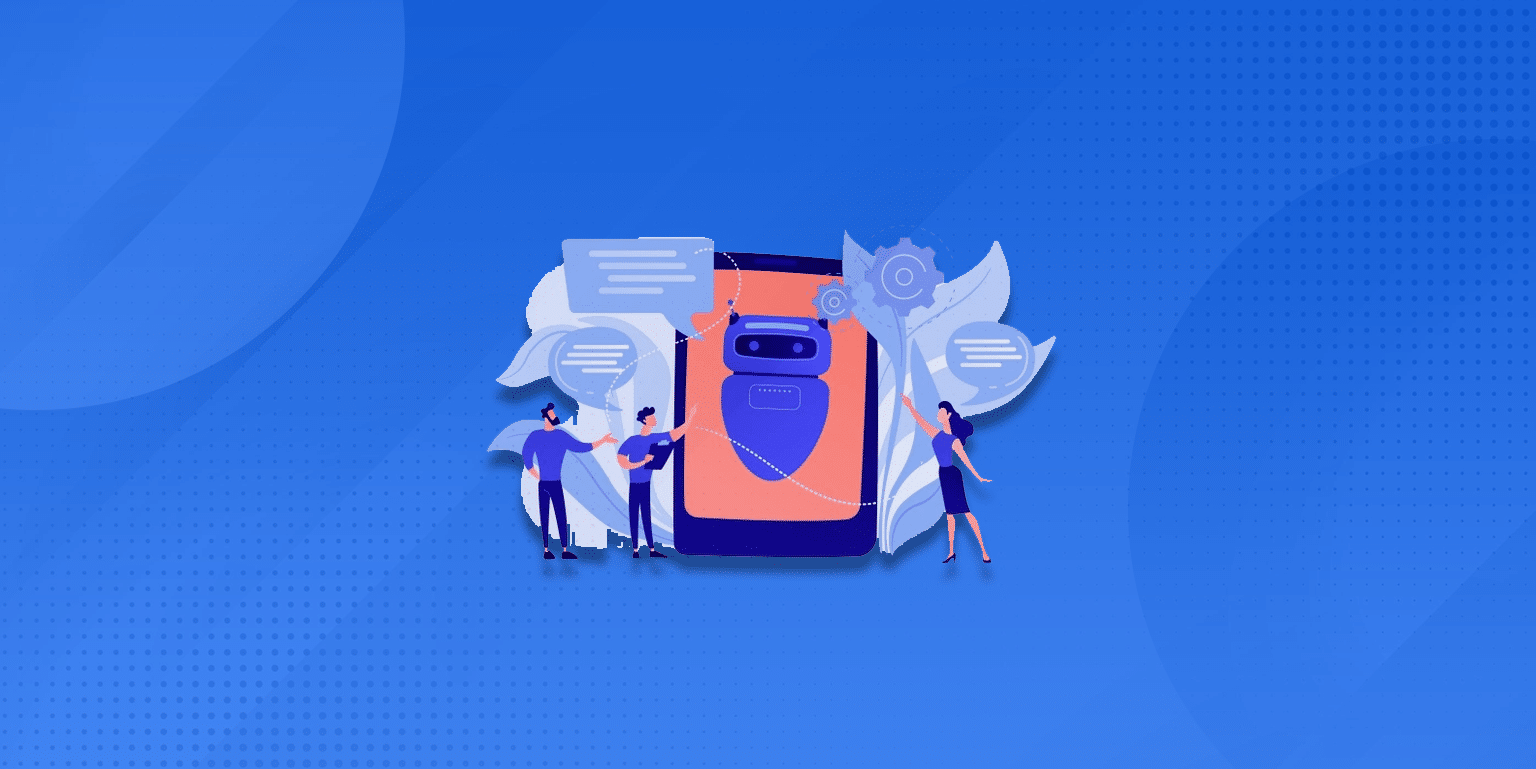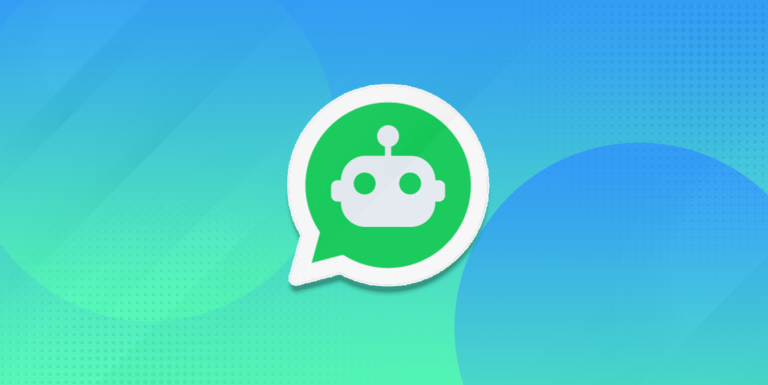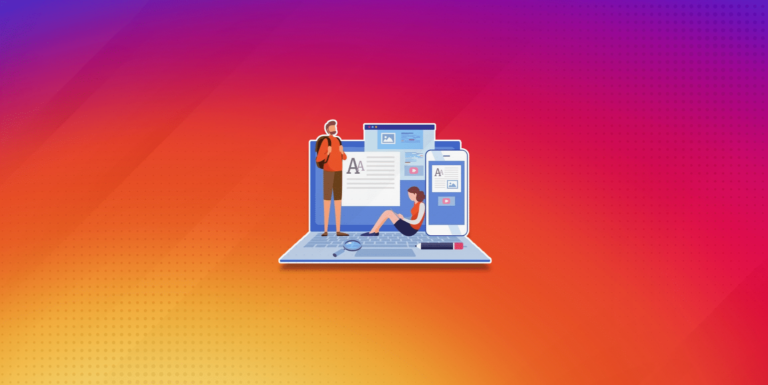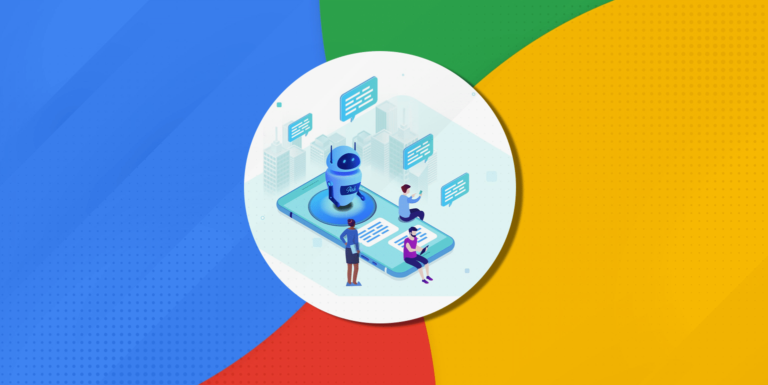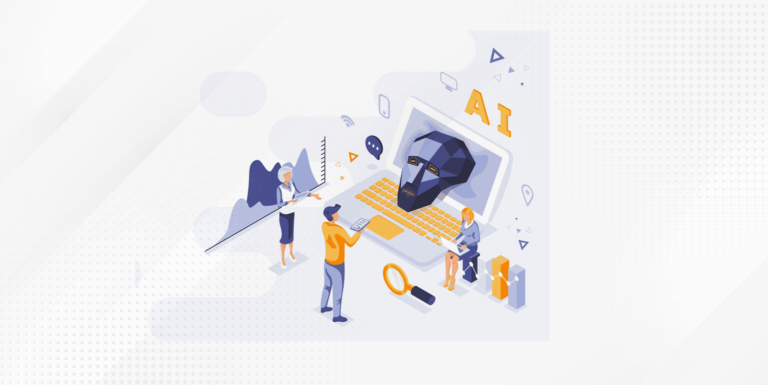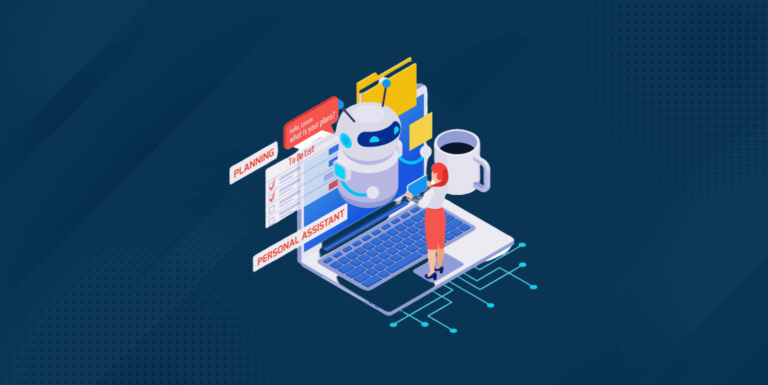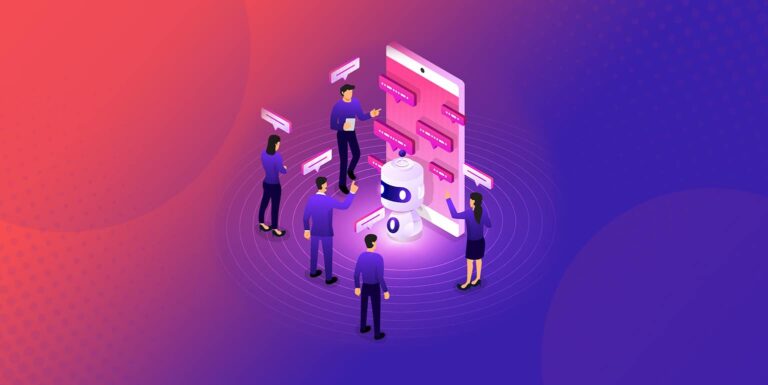What is a Chatbot: 10 Excellent Benefits Chatbot Has to Offer
If you’re active online, I can guarantee you that you have already encountered a chatbot. In fact, a study revealed that 1.4 billion people interact with chatbots regularly. You might think that it is still not as large as the number of users of other communication methods, yet it is still significant. And, most importantly, its number of users is constantly growing.
Brands can no longer rely on traditional service approaches to satisfy their clients in today’s digitally driven environment. Chatbots are at the head of a new consumer experience enabled by technological advancements.
The adaptability of these digital assistants is one of their main selling points. Chatbots may frequently be tweaked and sculpted to meet the specific demands of your business. A well-designed chatbot may thus assist in lowering service costs and functioning as an effective member of your support staff.
Chatbots are assisting as more services migrate to the digital realm, particularly customer assistance. This is made feasible by advances in artificial intelligence and natural language processing.
This means that chatbots are no longer just a waste of time; they are now workers. You can design a chatbot that seamlessly serves your agents and consumers across channels with a clear vision and rigorous preparation.
If you’re wondering what a chatbot is and how it functions, you’ve come to the correct spot. In this guide, we cover:
- What is a Chatbot
- Brief History of Chatbot
- How Chatbot Technology Works
- Different Types of Chatbots
- Why Chatbots are Valuable for Businesses
- Benefits of a Chatbot for Businesses
- Limitations of Chatbot
What is a Chatbot

A chatbot is software that imitates and processes human conversation on a basic level. When an individual interacts with a chatbot, it is almost the same as interacting with a human agent. Chatbots are utilizing a wide range of written and spoken input techniques to provide an accurate and relevant response to the customer.
Chatbots are intended to answer common and routine inquiries and questions automatically, so the user does not have to wait before getting a response. This technology uses information stored in a database to analyze the input by a user and select the best-preset response. A particular type of chatbot incorporates artificial intelligence algorithms to enhance the chatbot service over time.
The functionality and intelligence of chatbot technology will vary based on the sophistication of the program and the context in which it is employed.
Chatbots have traditionally been employed in customer service to expedite support conversations, but their applications are fast-growing. Small companies and organizations now employ chatbots to improve customer service and create a more productive work environment.
They’re so common in the digital business world that they’ve earned a variety of monikers, including virtual assistants, digital assistants, virtual agents, conversational agents, and others.
Brief History of a Chatbot
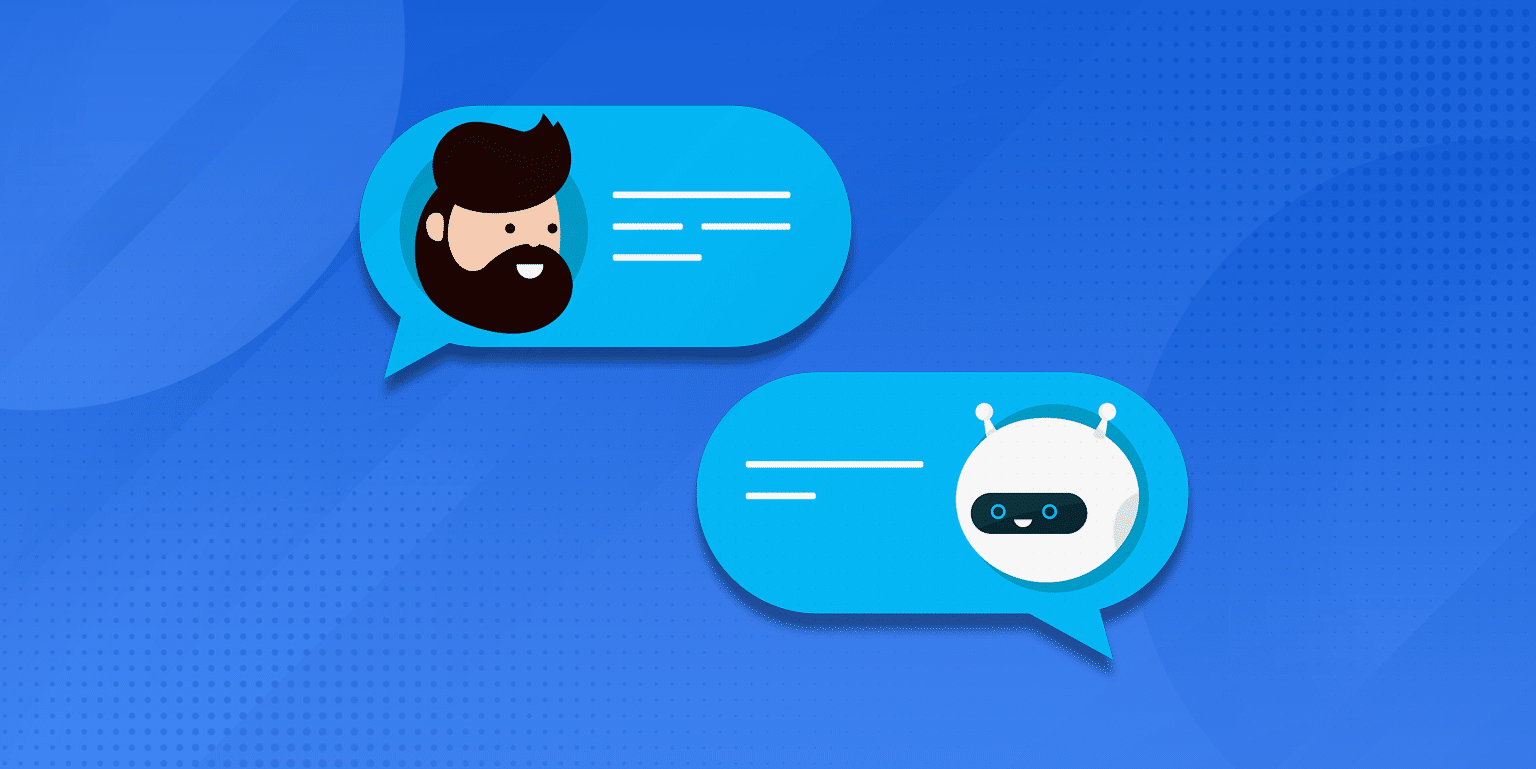
Joseph Weizenbaum, a computer scientist at the Massachusetts Institute of Technology (MIT), invented and built the first chatbot in 1964. ELIZA is the term given to the first one chatbot created. The computer software is supposed to simulate human interaction by processing natural language.
If we compare ELIZA to today’s AI-powered chatbots, she was rather primitive; it relied on a simple pattern-matching algorithm to give a sense of understanding but was unable to provide real context for the events it was asked to explain. However, defining the standard for how users interact with customer care chatbots, virtual agents, and virtual assistants today lays the groundwork for the future of human-machine communication.
Since the creation and introduction of ELIZA, several computer scientists have been working on developing their own version of a chatbot. Chatbots first gained widespread attention in 2009, when WeChat, a Chinese communication business, released its more sophisticated chatbot. The debut opened the path for WeChat to win the hearts of many users and establish itself as one of the most successful social media platforms in the world.
Furthermore, in 2016, several social media platforms began to include chatbots into their social messaging apps as a feature. Due to the fact that artificial intelligence is becoming more advantageous for many individuals, chatbots are becoming increasingly popular and useful.
At the moment, chatbots are considered to be a reliable tool for companies and organizations. It aids them in their interactions with current and prospective consumers and clients. Because of the capability of Artificial Intelligence, chatbots are also getting more and more useful.
How do chatbots work?
Chatbot technology is usually powered by artificial intelligence, natural language processing, and machine learning. An ideal chatbot should be able to respond to all types of questions without the aid of a human customer service representative. But how does a chatbot function?
Bots work on the most fundamental level by evaluating text or voice data input, determining the most appropriate response, and communicating that decision with users via a chat interface. In addition to being integrated into a number of major chat messaging systems (such as Facebook Messenger, Slack, Telegram, Whatsapp, and others), chatbot technology may also be utilized as a standalone platform.
Machine learning and rules-based chatbots are the two kinds of chatbots that are now available.
Ass the name indicates, rules-based chatbots function in accordance with a set of predefined rules. This is a more straightforward chatbot since it just answers specific queries by pulling responses from a database of previous responses. The bottom line is that the intelligence of a rules-based bot is only as good as the data set from which it can learn.
On the other hand, AI chatbots make use of machine learning and are programmed to read natural language rather than just following instructions. This indicates that children will be able to understand and comprehend more complex communication. They also develop more intelligence due to their interactions with others, as they learn what questions to ask and what responses to anticipate.
Different Types of Chatbot
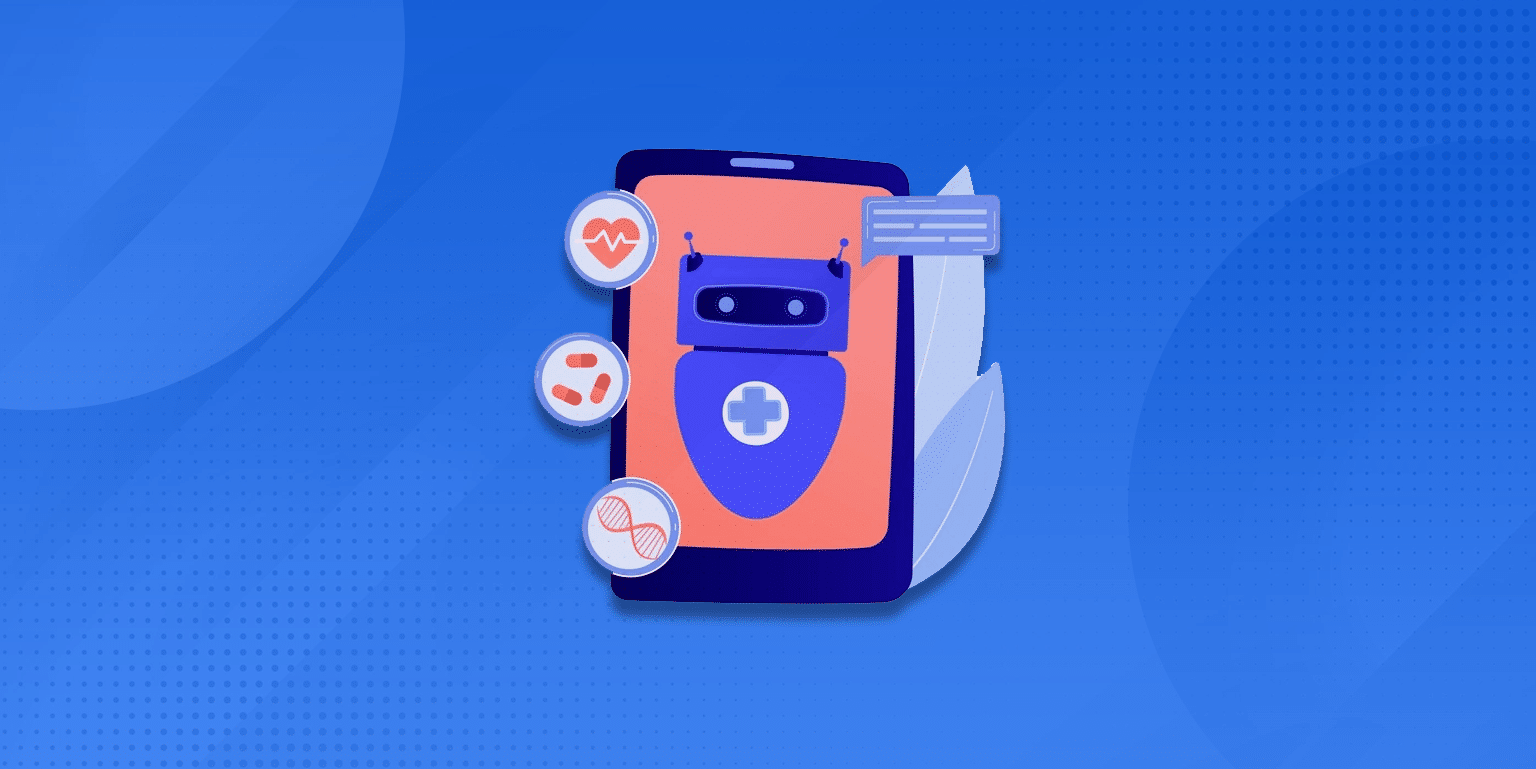
Chatbot technology has progressed to the point that it may be impossible to distinguish between the various functions and capabilities of different bots. As previously stated, there are two sorts of chatbots: linguistic (rules-based) and machine learning (learning via experience) (AI).
It’s important to note that the chatbot industry is always evolving and adapting to shifting customer experience trends and changing consumer expectations and corporate needs.
Rule-Based Chatbots
Rule-based chatbots are often referred to as decision-tree bots or decision-tree bots. As the name indicates, they adhere to a set of guidelines. Through these criteria, the chatbot learns about and becomes acquainted with the kind of issues that it will be able to address.
Flowcharts and rule-based chatbots are used to plan out talks in the same manner. They do this in anticipation of a customer’s inquiry and the manner in which the chatbot should respond to that question.
Rule-based chatbots may be configured to utilize simple or sophisticated rules depending on users’ preferences. However, they will not be able to respond to any questions that do not fit within the scope of the rules. Interactions with these chatbots do not impart any knowledge to them. Furthermore, they will only behave and perform in the environments in which you have educated them.
This kind of task-oriented bot is capable of responding to simple requests with a limited number of variables. While they use natural language processing to help with conversational interactions, their abilities are limited. They converse with consumers and make decisions about their next steps using if/then logic. Because of this, firms may employ them to provide continuous customer service.
Most of us have interacted with this kind of bot in the past, whether we were aware of it or not, whether it was on social media or on a company’s online shopping website. Using this form of a bot, a firm may increase the control and flexibility of its customer care teams while simultaneously enhancing the productivity of its human customer service agents by addressing common questions.
Despite the fact that rule-based bots have a less flexible conversational flow, the precautions they provide are equally beneficial. You may be more assured about the experience you will get from them, but chatbots that depend on machine learning are less predictable in their interactions with you.
Another advantage of a rule-based chatbot is that it:
- They are typically easier to train (less expensive)
- They are easily interfaced with older systems
- Streamline the transition to a human agent.
- They are extremely accountable and safe
- They typically include interactive components and media
- are not limited to text-based interactions
AI (Conversational) Chatbots
Virtual or digital assistants are names that are often used to characterize chatbots that are powered by artificial intelligence and machine learning. Their interactions are more engaging, tailored, and data-driven than those provided by rules-based bots because they use modern technology.
In contrast to interacting with a rules-based chatbot, when a customer connects with an artificial intelligence chatbot, the experience is more conversational. The bot becomes more contextually aware in response to data patterns and artificial intelligence algorithms over time. It mimics human behavior by using natural language understanding to communicate with the user.
Because of the application of predictive intelligence and advanced analytics, this bot may be able to tailor interactions based on user profiles and prior behavior. The bots may even learn about the user’s tas, initiate conversations with them, and forecast what they want. Alexa from Amazon, Google Assistant from Google, and Apple’s Siri from Apple are three instances of intelligent artificial intelligence bots that you may already have in your home.
It has taken a long time and a lot of work for chatbots to get to where they are today. The task of programming a computer to understand and comprehend human speech is a challenging one. Human speech is complex and complicated, and it is very difficult to reproduce it mechanically.
Conversational bots can understand and emulate human speech and behavior because they use a variety of fundamental natural language ideas. Consider the following example to see how it works in further detail:
Natural Language Processing (NLP)
Using natural language processing (NLP), you may figure out what someone is saying by breaking down their sentence structure, examining their grammatical mistakes, understanding idioms and other components of speech, and finding patterns. Humans typically use multiple terms to describe the same idea in everyday conversation; natural language processing (NLP) allows bots to identify this and respond appropriately.
Among the most essential processes involved in natural language processing are the processes of understanding and producing.
- Natural Language Understanding (NLU). NLU allows the bot to understand the user’s purpose by leveraging linguistic aspects such as lexicons, synonyms, and more nuanced themes. When used in conjunction with rules and algorithms, natural language understanding (NLU) identifies fragments of speech to grasp what the user is attempting to do.
- Natural Language Generation (NLG). NLG is a kind of artificial intelligence. As soon as the bot comprehends what the user seeks to do, it must translate its answer from machine code to understand human communication. Bots may now deliver individualized answers in addition to pre-programmed responses thanks to NLG (the kind used by rules-based bots). For the chatbot to offer an answer based on autonomous deep learning, it may use NLG.
AI chatbots may engage in sophisticated talks with users and provide realistic, nuanced responses that replicate human speech via the use of NLU and NLG, among other technologies.
An artificial intelligence chatbot may perform various duties and responsibilities to a customer’s requests within a dialogue window.
The bot may, for example, fill out a form, suggest a product or service, upsell, or even organize an appointment with a customer. Moreover, artificial intelligence chatbot applications may be integrated with third-party or backend software systems, such as enterprise resource planning (ERP) or customer relationship management (CRM), to perform more complex operations and tasks.
In order to provide the most human-like interaction possible, artificial intelligence chatbots seek to mimic human behavior. Although this is the case, 40 percent of people don’t care whether they get assistance from a chatbot or a human person – so long as they receive it.
Understanding the client’s request and responding to them with a personalized and precise response is unquestionably the key to good customer interaction, regardless of where the request originates from.
Hybrid Chatbots
A hybrid model combines the greatest features of both types of chatbots.
Users can benefit from rules-based chatbots and AI-powered bots using a hybrid chatbot. They enable conversational systems, a clear operating system, and a consistent bot personality. Simultaneously, they employ machine learning to enable smarter and more sophisticated interactions by utilizing data and AI algorithms.
Businesses that use a hybrid strategy can escape the restrictions of utilizing a single technology and enjoy more flexibility and speed of development to improve the client experience.
Chatbots Best Features
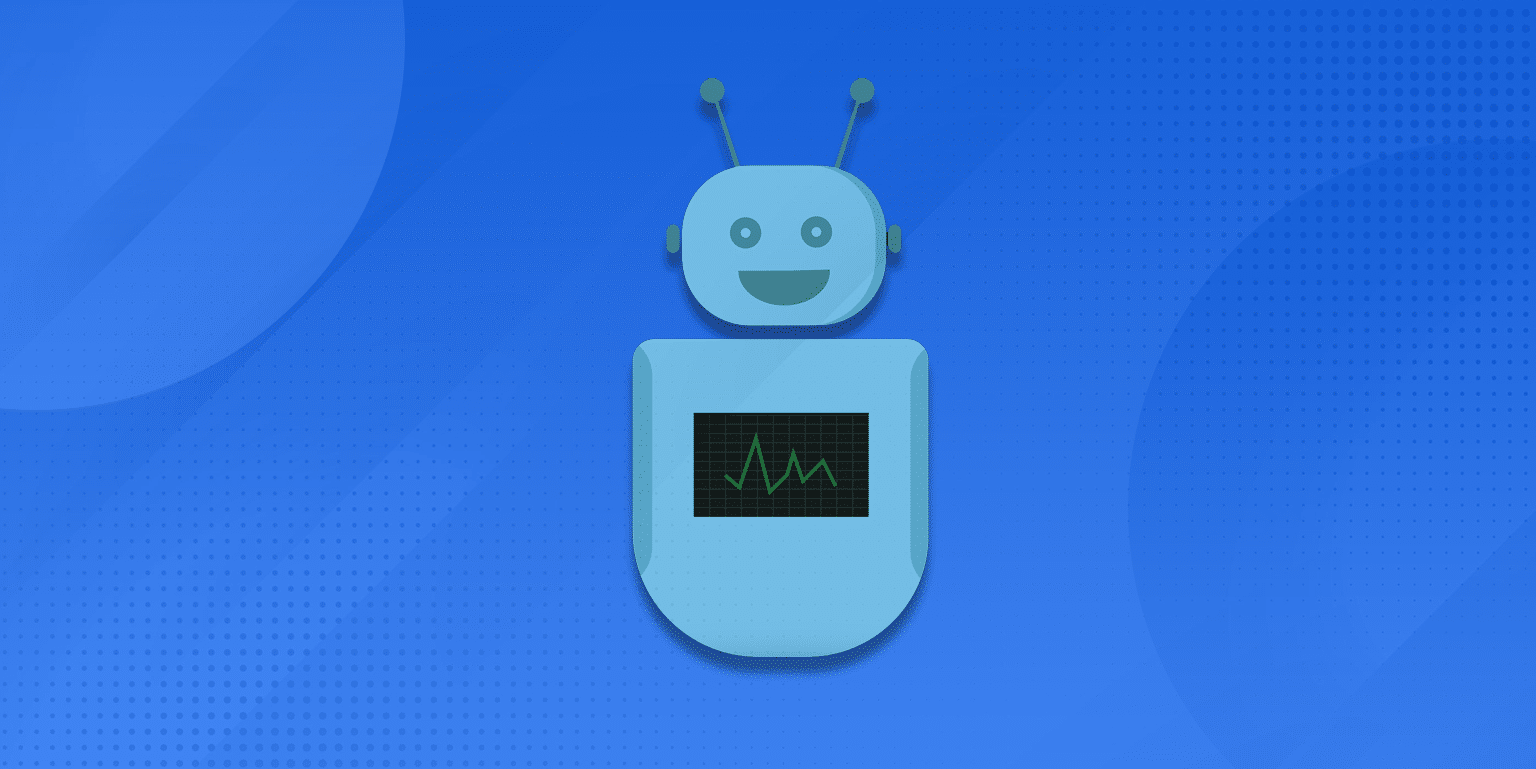
Chatbots, in general, offer various valuable features. Here are some chatbot’s best features.
Conversational and Smart
Chatbots are capable of understanding the intent of users (even when the communication is complicated) and providing the correct information in response. Furthermore, it has the ability to recognize and interpret colloquial speech, as well as slang and ignorance. A number of chatbots are also capable of learning from their interactions with customers, allowing them to give a better and more fulfilling customer experience.
Furthermore, the bot’s critical memory enables it to reuse information in order to provide contextually targeted assistance and the most humanlike engagement experience imaginable. Chatbot systems that can manage all of this while also offering multi-language support are in high demand among businesses.
As an additional benefit to businesses, chatbots have the potential to enhance the internal knowledge management of their organizations. They provide access to all of the information, data, and expertise that the organization has.
Chatbots save workers time by eliminating the need to spend hours searching through documents or using software and tools to get data and solutions to important concerns. They may be as simple as a FAQ bot, which is what they are. Conversational AI systems that are more complex, on the other hand, may retrieve data from a variety of tools that are used across the company.
Emotionally Adaptive
Your chatbot must be configurable to fulfill the aims of your business and your customers’ needs since it is a representative of your organization. The chatbot solution should be easy to use, adaptable to your organization’s needs, and able to react quickly to changing business demands and requirements.
It is necessary for a chatbot to have emotional intelligence. It is presently a fundamental component of any artificial intelligence-powered chatbot in use today. A customer’s personality qualities should be researched, and the representative should understand their tone and mood. When interacting with customers, a chatbot must be totally capable of establishing the appropriate tone depending on their emotional state. Therefore, a chatbot will be equipped with the essential capabilities to give customers a highly customized user experience.
Replika is one of the most illustrative examples I can provide. However, even though it is not a firm that supplies chatbot software, it perfectly replicates the emotions of real people. It has been specifically designed to provide comfort to persons suffering anxiety or loneliness, among other things. Chatting with the bot reveals that the artificial intelligence system at the backend can present you with an emotionally intelligent conversational experience.
Multichannel Capabilities
The chatbot app you choose should have omnichannel capabilities, which will allow users to switch between devices and internet-based applications at any time of the day or night. Get to know your customers on their terms, and you will see increased levels of engagement and customer satisfaction. Ensuring the bot is compatible with online and mobile applications and a range of operating systems is part of this process (Android, iOS, Mac, Windows, Linux).
In order to maintain the thread of the discussion, the user should be allowed to switch between channels (for example, Facebook Messenger and live website chat).
Analytics and Data
Companies may modify their goods and services to meet the expectations of their consumers with the aid of bots that collect and analyze specific client data. Additionally, data from client inquiries, replies, and other information enables bots to deliver more tailored assistance to customers.
Incorporating current interactions and comments into machine learning algorithms may help enhance future talks by providing information such as geolocation, interaction channels, and purchasing history to boost future discussions.
Hybrid Model
As previously stated, solely rules-based or machine learning chatbot models have limits. As a result, a hybrid strategy that incorporates the best characteristics of both models enables organizations to deliver optimized customer care by leveraging data insights via a consistent bot personality that is aligned with company objectives.
Chatbots and human agents can also be combined, allowing the chatbot to deliver instant replies that agents can alter. This saves them from having to type everything from scratch and hunt for pertinent information while providing a personal touch.
Why Chatbots are Valuable for Businesses

Customer service, marketing, and sales teams are busy in today’s fast-paced environment. Surprisingly, modern marketers have time to breathe to meet consumer expectations and continually improve their customer experience. Fortunately, AI chatbots can streamline business operations and improve the customer experience by interacting in a personalized, accurate, and timely manner. Chatbots are popular with users because they provide quick, easy, and simple solutions to questions.
AI chatbots allow enterprises to deliver personalized customer service. Better engagement, in turn, leads to important customer information that can be used to understand consumers better and develop as a business.
Chatbots always provide the right answer. In addition, you can use NLP, storage, and analytics to tailor your support to the needs of your specific user. Combine Live Agent’s best help features (conversational and intelligent understanding) with machine learning technology (data, speed, accuracy) for streamlined support to ensure consumers get the best answers every time. Offers.
The chatbot integrated into the contact center system is an ideal channel for solving customer support issues, providing general advice, and performing numerous day-to-day activities.
Benefits of a Chatbot for Businesses

A chatbot is very beneficial both for your brand and for your consumer. It offers various valuable benefits that can help you make your corporate task easier and more convenient. Here are some of the key benefits of using a chatbot.
Benefits for Customers/Users
Here are the key benefits of chatbots for customers or users.
24/7 Availability
This advantage is mutually exclusive. Chatbots are becoming mobile information terminals for late-night shopping and people with busy appointments. Customers can start discussions at any time and respond at the right time.
Waiting a few minutes for the next available operator is not a resolved issue, but chatbots are most likely to fix it. Maintaining a 24-hour system keeps providers and customers in constant contact. Of course, this reward is proportional to the effectiveness of the bot. Even if it’s available 24 hours a day, 7 days a week, a bot that can’t answer simple consumer questions isn’t worth it. The main focus is on how chatbots are well aware of and address consumer concerns. Finally, 24/7 availability can be offensive if the bot is unavailable due to security concerns or maintenance.
Instant Response
A human customer service operator can only interact with a client one at a time, which means they can only answer one question. However, a chatbot can respond and engage with multiple interactions simultaneously. In fact, the number of clients a chatbot can hold is limitless. With the power of cloud storage and artificial intelligence, clients can get an instant response to their queries.
Relaxed conversation
One of the principal reasons consumers prefer talking to a bot instead of a customer representative is that it is easier to talk to chatbots. It is not because they are good interlocutors, but because there is less pressure to get involved.
Customers can skip the paperwork and use candid answers when talking to bots. It may be considered rude in live chat, but it improves the performance of keyword-dependent bots. If you can skip greetings, goodbye, and thank you notes, the conversation will be much faster and easier for your customers.
Chatbot exchange will also be more fun. Try sprinkling humorous provocations and jokes on your scripts when creating a bot persona. Of course, if it fits your business image.
Easily accessible
Customers don’t ask questions immediately while browsing or actively seek customer service, which helps make contact information readily available.
User experience designers have found it difficult for visitors to navigate websites that label pages using obscure marketing terms. If it takes too long to answer, you run the risk of losing your customers.
Chatbots are essentially on every page of your website and often sit vaguely in the corners. If the customer wants to talk directly to the agent about your product, they can transfer them immediately.
Reducing the number of steps a customer needs to talk to you increases the chances of maintaining their interest.
For Businesses
Here are the key benefits a chatbot can offer to businesses.
Cost-Saving
In today’s highly competitive business environment, the need for a robust customer service department continues to grow. The powerful chatbot implementation allows businesses to respond to large numbers of customer inquiries in a relatively short amount of time.
Implementing a chatbot requires some capital investment, but significantly less than the traditional customer service model, including infrastructure, payroll, training, and many other resources.
According to a survey, companies spend about $ 1.3 trillion each year responding to inquiries from about 265 billion customers, and chatbots show that companies can save up to 30%. Chatbots help businesses optimize costs without compromising the quality of customer service. Here are some other cases where chatbots help businesses cut costs.
- Chatbots automate everyday business processes and allow customer support teams to focus on more complex requests.
- Systematically expand chat support during peak hours to provide quality support and increase customer satisfaction.
- Enable some new customer service models to add brand value and credibility
Allow Businesses Provide Contextual, AI-Driven Support
Contrary to the general belief that the main advantage of chatbots is to answer questions and provide customer support, chatbots can provide value-based contextual support that can significantly benefit your business.
The AI chatbot uses data to provide users with a personalized experience. These chatbots don’t just answer pre-programmed questions that all customers experience in exactly the same way.
Analytics
Chatbot analysis allows companies to analyze how well their bots work for successful business results and sales. It also gives you in-depth insights into how people interact with your business and what they want.
The chatbots have a flexible approach that allows businesses to serve their customers on almost any platform. It is easy to adapt chatbots to different platforms and integrate them into your existing IT infrastructure.
Chatbots also can assist you in financial analytics such as banking and crypto investment
Optimizes Customer Engagement And Sales
Customer loyalty is essential to growing sales and retaining customers, and chatbots are a great tool for doing this.
Studies show that companies that successfully interact with their customers can increase their spending by almost 20% to 40%. The flexible structure of these chatbots makes them very easy to integrate into other systems and enhances customer loyalty.
A good example of this is online booking. As soon as the customer communicates with the chatbot and shows interest in the booking, the chatbot will take the customer to the booking page to complete the sale.
This quick and easy experience will make your customers happy and happy. In addition, the programmed nature of chatbots makes them sound more natural and humane, making the customer experience more positive and enjoyable.
Flexibility
Regardless of the industry, chatbots are beneficial to businesses and industries today. In particular, some industries are likely to revolutionize AI-based chatbots. Here are some of the industries that use chatbots:
- Healthcare. There are a couple of values of chatbots within the healthcare enterprise, including reserving appointments, refilling prescriptions, and sending clinical details. Additionally, those chatbots also can offer clinical help to sufferers to display their fitness periodically and remind sufferers to take medicines.
- Banking & Financial Sector. Chatbots provide a great manner to revolutionize the closely transactional sports of banks and monetary institutions. Chatbots’ blessings in banking answer consumer questions on online banking and give them facts about account opening, card loss, and branches in numerous locations.
- Education. There are numerous blessings of chatbots in education, inclusive of sensible tutoring structures and customized studying surroundings for college students. Additionally, chatbots can also examine a student`s reaction and how properly they examine new fabric or help coach college students by sending them lecture fabric inside the shape of messages in a chat.
- HR. Implementing chatbots in HR and recruiting can assist in a couple of methods to automate every recruiting method stage. From trying to find candidates, comparing their skills, and informing them if they’re certified for a selected task posting, the use of chatbots are many.
- Retail. Another critical enterprise for chatbot packages is retail and e-commerce. For instance, corporations can use retail chatbots to reply to consumer questions simultaneously as they keep online, imparting extra personalized product recommendations, streamlining the income method, or supporting clients looking for a product, locating an order, and charging for it, and tuning the delivery.
- Travel and Tourism. Chatbots are very popular in the travel and tourism industry. Travel industry chatbots can answer booking questions by providing visitors with information about getting there and current weather conditions.
Lead Generation
Chatbots can ask necessary and relevant questions, convince customers, and quickly generate leads. This will help the conversation flow in the right direction and increase conversion rates.
Besides generating leads, another advantage of chatbots is that they certify leads through identified KPIs, including timelines, budgets, relevance, resources, etc., and avoid time-consuming processing leads.
Limitations of a Chatbot
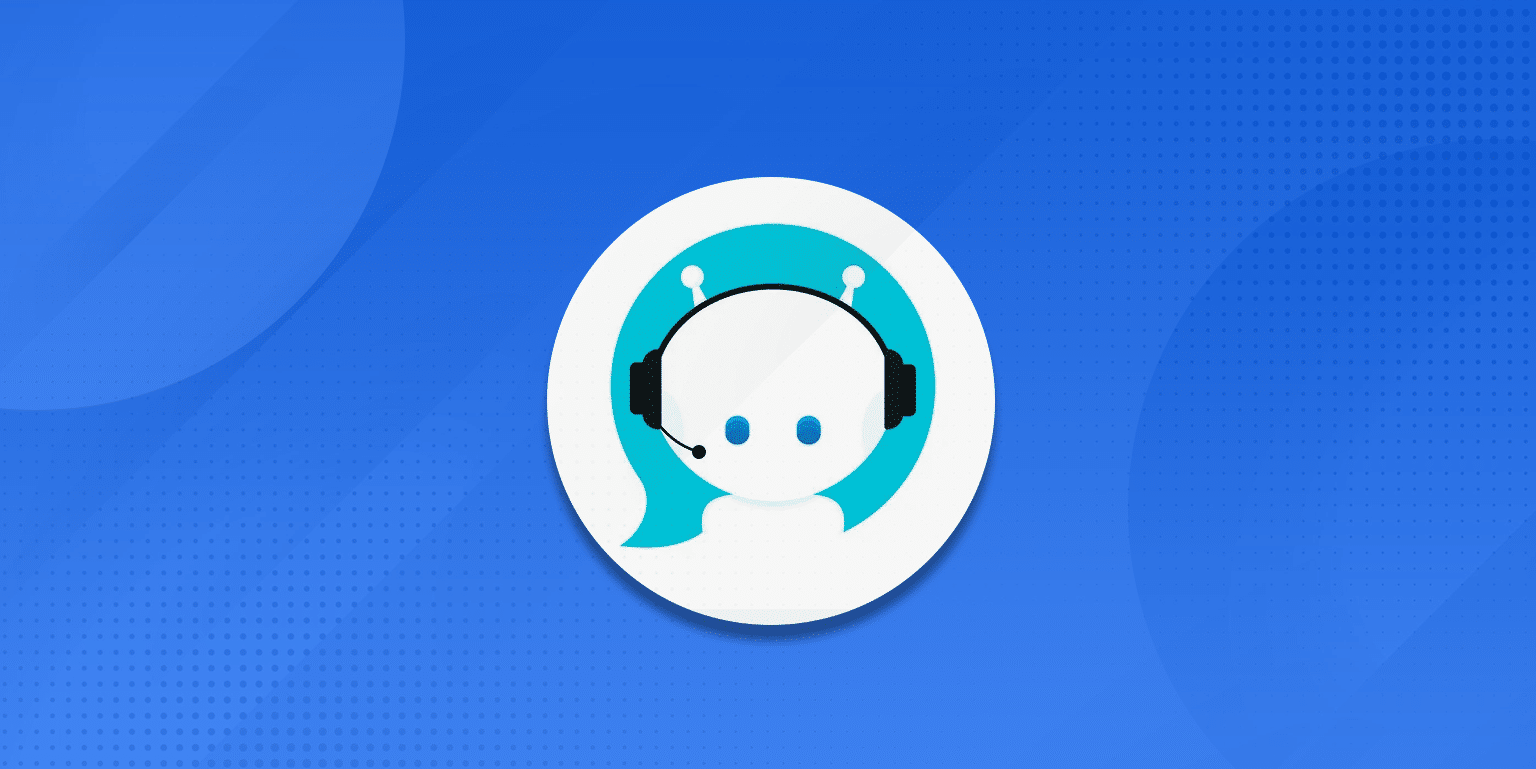
Many businesses utilize chatbots to optimize their brand’s customer engagement, automate customer service processes and provide a quality and efficient user experience. However, due to some limitations of the advancement that powers them, businesses can not utilize chatbots to their fullest potential.
Businesses typically use a rule-based chatbot due to their capability to provide efficient and always-available customer service and engagement. But, this type of chatbot can not provide a rich conversational interaction, which is necessary to keep customers engaged and satisfied.
Since it limits the engagement potential and the bot’s capability to assist the users. For example, once a user has reached a certain level of complexity, they cannot return to the discussed topic, ask qualifying questions, or address the issue. The lack of escalating capabilities of human agents can be frustrating to customers.
Furthermore, machines are devoid of feeling. Customers may find this very difficult since they do not get the same level of empathy and understanding that they would receive from a real person. That being said, we now have artificial intelligence bots that can be programmed to have a personality and respond with empathy and emotion to certain messages.
The Gartner Group anticipated that by 2020, 40 percent of first-generation chatbot/virtual assistant programs released in 2018 would have been discontinued. Considering this, why aren’t many firms investing in powerful machine learning chatbots that can engage in deeper, humanlike conversations with customers?
There are a variety of causes behind this. To run and maintain their systems, artificial intelligence bots need massive quantities of training data as well as highly competent humans. A machine learning bot is not a sentient creature, and the notion that it is is just not accurate. Furthermore, since they work as a black box, it might be tough for specialists to act if anything goes wrong with the bot model.
The following are the most significant limitations of machine learning bots:
- Collecting and categorizing training data, which is essential for the development of an artificial intelligence chatbot application, is time-consuming and expensive.
- Continuous review, continuous maintenance, and optimization of their knowledge base are all required of them. It might be difficult, if not impossible, to keep track of each and every bot communication and to analyze the interactions.
- Their failure to comprehend the customer’s behavior or request carries the possibility of dismissal. In addition, since they are constructed from snippets of conversations and other resources, pure machine learning systems might have inconsistent personalities.
- The norms and legislation governing data protection might provide difficulties when it comes to keeping, accessing, and deleting the information that chatbots acquire and need in order to operate.
Frequently Asked Questions
Here are some frequently asked questions about chatbots besides “What is a Chatbot?”.
Are chatbots new?
No. The use of conversational chatbots has been around for many decades. Multiple efforts to create a chatbot that accurately resembles human interaction have been made in the past, all of which have been failed. The first-ever chatbot was created in 1966 by MIT professor Joseph Weizenbaum and was named ELIZA. It was supposed to converse with humans in the role of a therapist and was built in 1966. ELIZA was followed by the development of various chatbots, including PARRY in 1972 by American psychiatrist Kenneth Colby, Jabberwacky in 1988 by developer Rollo Carpenter, Dr. Sbaitso in 1992 by Creative Labs, and ALICE in 1995 by Richard Wallace, all of whom were inspired by ELIZA.
What information sources will the chatbot use?
This access to company data, whether from your current knowledge base, website, internal databases, existing documents, reservation systems, shipping information, product inventories, or other sources of information, is critical for a chatbot to work effectively and to provide value to users.
Then, after you’ve identified which data sources will be required to answer the question posed, you can figure out how the bot will access each data source so that it can engage with the user in a meaningful manner. Will you be required to make your existing sources accessible to those who need them? Is there a public API that you may use?
How long does it take to create a chatbot system?
It is dependent on the level of intricacy of the client’s specifications. Our current record for building a basic bot is 4-6 weeks for an average-sized bot. However, in more difficult cases, such as those in which the client’s needs are unclear or when many stages of construction are required, it may take up to 2-3 months.
What kind of inquiries should the chatbot be able to respond to?
The most common consumer queries and use cases are addressed by chatbots, which are programmed to reply to them. It is critical to understand these questions before moving on to other functions and dialogues later in the process.
Don’t forget to make a list of all the frequently asked questions and prioritize them according to the volume and complexity of each needed answer.
Do I need to have coding skills to create my own chatbot?
On the nerDigital chatbot marketing platform, there are no coding skills or training necessary to construct a chatbot that meets your needs and expectations. Choose your bot’s goal and create bespoke processes in minutes using BotBuilder.
By using the nerDigital chatbot marketing platform, you can easily develop a chatbot by selecting from a range of templates that are accessible for various businesses such as automotive, e-commerce, and utilities, among other things. Edit the template and replace the default conversation flow with your own custom discussion flow for the chatbot.
What are the core functions of a chatbot?
There are several methods to make use of chatbots, including the WhatsApp Chatbot, which is discussed below.
In addition to giving clients a prompt answer, you can utilize a chatbot to do the following:
-Provide basic product information
-Provide shipping/delivery information
-Provide updates to the latest news stories
-Provide details on ongoing promotions, deals, discounts, and offers
-Make an appointment and more.
Are all chatbots based on AI?
As previously stated, we distinguish between two kinds of chatbots: rule-based chatbots and artificial intelligence-based chatbots.
With a rule-based chatbot, prospective user questions and possible responses are predefined in advance of the chatbot’s deployment. The chatbot will not help answer a question if it is posed in a way that has not been previously specified.
Chatbots powered by Artificial Intelligence, as opposed to rule-based bots, can understand and process natural language. This is accomplished via the use of Natural Language Understanding (NLU). Chatbots that are powered by artificial intelligence may learn semi-automatically.
How do bots improve the customer experience?
Bots improve the customer experience by providing your customers with the rapid answers they need on their terms, at any time and from any location. According to Gartner, bots are your queue busters and central automated centers of information, thanks to their capacity to deliver 24/7 customer care and handle a nearly endless number of consumer inquiries simultaneously.
Taking it a step further, if your bot is unable to answer a customer’s question, it will immediately send the consumer to an agent who can – while also passing along the transcript to assist the agent in contextualizing the encounter. Customers will not fall through the gaps if no channel pivoting is in place. That’s again for the consumer experience.
What security concerns are there with bots?
There are no special security problems with chatbot technology distinguishing it from any other system. The technology itself is no less safe or secure than any other platform, although you may have industry-specific standards (such as HIPAA or FEDRamp compliance). As long as your website and technology stack is set up securely and you ensure that your customers’ data is protected, there is no need to be concerned about security breaches caused by a robot.
Having said that, not every bot platform conforms to the same set of guidelines (just like other software). In the event that you have special needs, include your IT staff in the process and ask difficult questions before selecting a bot provider.
Take-Aways
The chatbot market is growing at a rapid pace. Chatbots and artificial intelligence technologies will continue to augment human talents by automating time-consuming operations or answering frequent requests, allowing human agents to devote their time to strategy and more complicated duties rather than responding to common requests.
Customers and businesses may benefit from a revolutionary communication experience that is quick and accurate as chatbots grow and become increasingly capable of conducting more nuanced discussions. Furthermore, advances in natural language processing and machine learning will result in more complex artificial intelligence algorithms, which will enable businesses to provide more personalized and unique customer experiences to their customers.
Suppose this article does not suffice all the things you want to learn about ‘what is a chatbot,’ feel free to contact us. We will be glad to tell you more information about what is a chatbot.

